





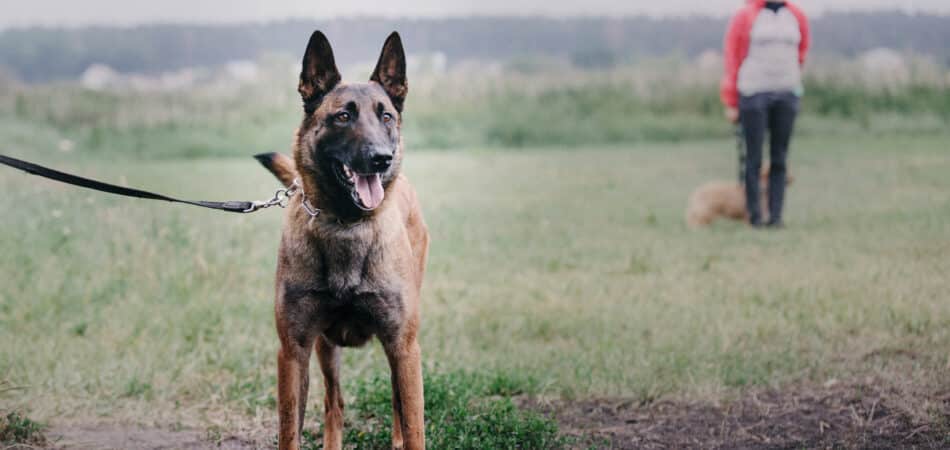
Law talk isn’t exactly anyone’s idea of a good time. But here you are, reading about protection dog laws, so I’ll make this worth your while.
First, reality check: these laws aren’t here to ruin the fun or trip you up. They exist for a bigger purpose—keeping you, your dog, and everyone else safe.
However, protection dog laws don’t stop at the obvious (like preventing animal cruelty or livestock chasing). They touch on leash requirements, insurance policies, training standards, and even define what your protection dog is under the law.
Why does any of this matter? Because owning a protection dog isn’t just a privilege—it’s a responsibility. And understanding the laws is step one in proving you’re up to the task.
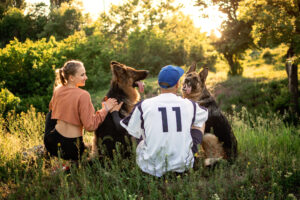 These dogs are trained for one thing: protection. Whether it’s guarding you, your loved ones, or your property, their role is specific and intentional.
These dogs are trained for one thing: protection. Whether it’s guarding you, your loved ones, or your property, their role is specific and intentional.
But—and this is important—they’re not service animals.
Unlike service dogs protected under the ADA, protection dogs operate in an entirely different legal category.
Municipalities often have strict guidelines about what constitutes a “protection dog” versus an aggressive animal.
The difference? Documentation, training certification, and—critically—controlled response.
A protection dog doesn’t just randomly attack; it’s strategically trained to neutralize threats with precision.
One wrong move, one overzealous bite, and you could be facing significant legal consequences—at best—facing hefty fines, at worst, losing your dog.
The legal space for protection dogs is complex and varies by jurisdiction —what’s perfectly acceptable in Texas might get you slapped with a citation in California.
Some states, like Michigan, keep it simple: if your dog is off your property, it must be on a leash. No exceptions, no gray areas.
Pennsylvania offers a bit more flexibility with its “reasonable control” standard, meaning your dog doesn’t always need a leash—but you’re liable if it causes harm. For protection dogs, this adds a layer of complexity.
These dogs are trained for precision, but even a controlled response could trigger legal fallout if someone gets hurt.
Local Laws Matter
Even if your state seems lax, don’t get too comfortable. Many leash laws are enforced at the local level, and requirements can vary from one city to the next.
One county might let your protection dog accompany you off-leash with proper training, while the next could mandate strict leash use at all times. A quick call to your city or county office can save you from unexpected penalties.
Special Restrictions
Certain areas have specific leash rules. Wildlife zones, parks, and public places often require leashes to protect wildlife, livestock, other dogs/pets and the public.
For example, Arizona mandates leashes in state parks and during rabies quarantines, while Massachusetts insists on leash control in public rest areas.
Let’s break down the laws:
Behavior Over Breed
In regions like the U.K., dangerous dogs legislation focuses heavily on behavior rather than relying solely on breed stereotypes.
Sure, certain breeds—like Pit Bulls, Japanese Tosas, Dogo Argentinos, and Fila Brasileiros—might automatically fall under restrictions in some areas, but it doesn’t stop there.
Understanding the Guard Dogs Act of 1975 is critical for protection dog owners:
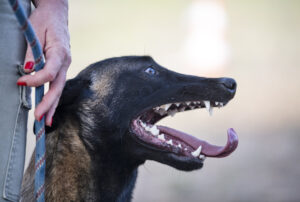
Texas law states that any dog can be deemed dangerous if it causes harm or poses a serious threat, regardless of whether it’s a recognized protection breed. Owners of dangerous dogs must register the animal, ensure it’s securely contained, and obtain liability insurance.
On the flip side, states like California take a more lenient approach, placing fewer restrictions on well-trained protection dogs as long as they don’t exhibit aggressive behavior outside of their training or purpose.
If a dog is identified as potentially dangerous, the law requires the owner to obtain proper licensing and ensure the dog is vaccinated.
On the owner’s property, the dog must be securely confined indoors or in a fenced area that prevents both escape and unauthorized entry.
When off the property, the dog must be under the control of a responsible adult and restrained with a sturdy leash to ensure public safety.
Breed-Specific Legislation
Breed-specific legislation (BSL) imposes additional requirements or outright bans on certain breeds deemed “high-risk.”
While controversial, these laws exist in regions such as the U.K., Canada, and various U.S. states and cities.
For example:
For protection dogs, compliance often involves demonstrating that the dog is properly trained, insured, and maintained under strict control
2014: A seven-year-old boy Logan Meyer from Hustisford, Wisconsin, was trajically mauled to death by his parents’ Rottweiler. The dog was undergoing protection training at the time of the incident.
1997: In California, Sabine Davidson, a Rottweiler owner, was training her dogs in Schutzhund—a rigorous discipline that includes tracking, obedience, and protection work. Despite this, her dogs attacked and killed an 11-year-old boy waiting for his school bus.
Do you see where I’m going with this?
The effectiveness—and safety—of a protection dog doesn’t hinge solely on the dog’s abilities. It’s about professional training, the handler, and the level of responsibility involved.
These tragedies highlight one undeniable truth: poorly managed or DIY training of protection dogs can have devastating consequences.
Now, many jurisdictions require professional training for protection dogs, particularly for advanced tasks like bite work, crowd control, or home security.
Certification from accredited organizations, such as the International Association of Canine Professionals (IACP) or the American Schutzhund Association, often serves as a benchmark of competence.
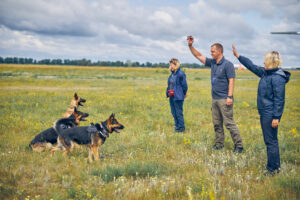
Proper training ensures the dog remains calm and sociable around children, guests, and other animals while retaining its protective instincts when needed.
Many professional trainers include scenario-based drills to simulate real-world threats. From home invasions to public altercations, these exercises prepare the dog to respond with precision under pressure.
Training isn’t just for the dog; it’s for the owner too. Handlers must learn how to issue clear commands, maintain composure in high-stress situations, and understand the dog’s body language to avoid triggering unnecessary aggression.
Now, training laws in different regions
Failing to meet these standards doesn’t just put you at legal risk—it endangers lives.
Now, let’s walk you through the critical responsibilities every protection dog owner should understand and uphold:
Identification: Clear Signals for Clarity
It’s important to identify your dog, not just for legal compliance but to reassure the public. The last thing you want is a stranger casually reaching out to pet your vigilant protector.
The best methods often include:
Failing to display proper identification or warnings can lead to fines, legal disputes, or even liability claims if incidents occur.
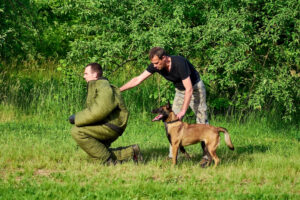
1. Why It’s Necessary
Protection dogs, by nature, are trained to react to threats. While this is a valuable skill, it also carries the potential for injury or property damage in high-stakes scenarios.
Liability insurance ensures that if the worst happens, both the owner and the affected party are covered.
2. What It Covers
Most liability policies for protection dogs include coverage for medical expenses, property damage, and legal defense costs in case of lawsuits.
Some policies go a step further, covering the costs of retraining or rehabilitation if the dog’s actions lead to litigation or require behavioral reevaluation.
Meeting legal responsibilities is just the starting point. Ethical ownership means going above and beyond the law to ensure your protection dog is a safe and effective partner.
No responsible dog owner wants to confront the fallout from negligence, but the reality is clear: failing to uphold your responsibilities can lead to serious repercussions—not just for you, but for your dog as well.
Here’s how things can spiral out of control:
Neglecting laws and regulations surrounding protection dogs can result in substantial penalties:
Settlements can reach into the hundreds of thousands of dollars, especially if the injured party proves negligence.
Convictions can lead to probation, significant fines, or jail time, depending on the jurisdiction and severity of the case.
 If authorities deem your dog to be dangerous due to negligence or lack of control, you could face the ultimate consequence—losing custody of your animal.
If authorities deem your dog to be dangerous due to negligence or lack of control, you could face the ultimate consequence—losing custody of your animal.
In many cases, local animal control agencies will seize dogs involved in attacks, especially if they find evidence of improper training, inadequate containment, or failure to follow legal guidelines.
While some dogs are sent for rehabilitation, others may face euthanasia if deemed an ongoing threat to public safety.
Incidents involving protection dogs often attract public scrutiny, especially when they result in harm. The fallout can extend far beyond the immediate legal and financial consequences:
The harshest consequence of owner negligence is the possible death of the dog. Some regions have strict “one-strike” policies:
So, we can infer from the above laws that there is a bit more to becoming a protection dog owner than just picking the right breed or finding a good trainer.
It’s a commitment that blends legal knowledge, ethical ownership, and ongoing responsibility.
Don’t leave things to chance. Stay informed, stay prepared, and if you’re ready to invest in a properly trained protection dog, contact Vanguard Protection Dogs.
Their expertise ensures you’re not just meeting legal standards but setting a higher benchmark for safety and responsibility.